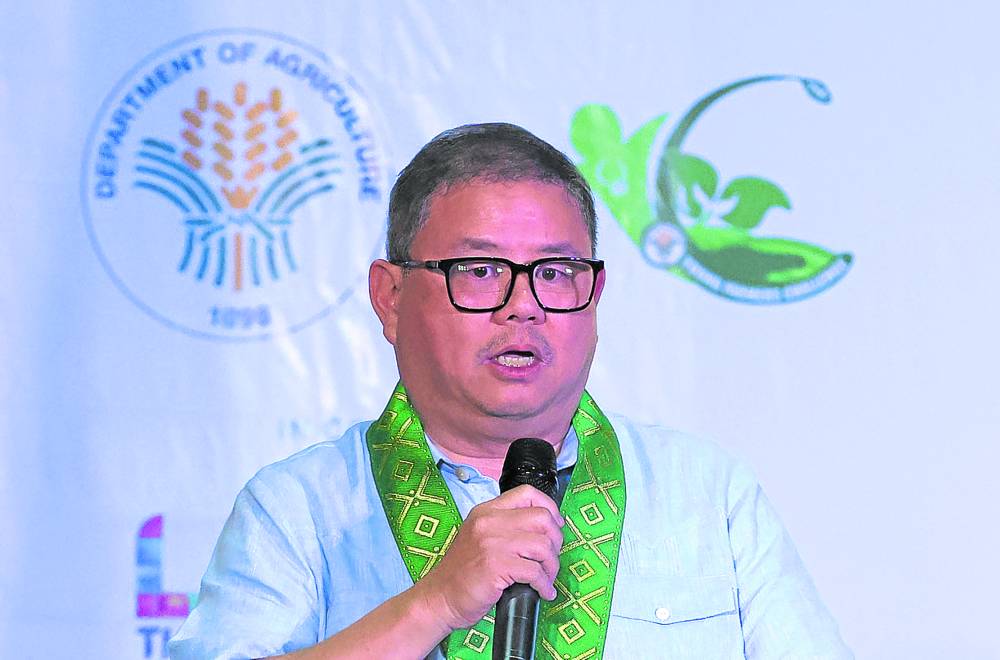
Agriculture Sec. Francisco Tiu Laurel Jr. —Niño Jesus Orbeta
MANILA, Philippines — The Department of Agriculture (DA) is expanding the coverage of its program to offer rice at only P29 a kilo to include areas outside the metropolis as the retail price of this staple food is expected to decrease.
“By Aug. 1, hopefully we will have 23 stores plus three provincial areas. We will have one in Cebu, maybe Maguindanao,” Agriculture Secretary Francisco Tiu Laurel Jr. said during the distribution of financial assistance to farmers in Aurora province.
READ: Gov’t rolls out ‘P29 per kilo’ rice program for low-income folk
“Then as we go along, we will widen the coverage and may even try to lessen [the price] of the P29-per-kilo rice in Kadiwa stores nationwide, hopefully by the first quarter of next year,” he added.
Early this month, the DA rolled out Program 29 in 10 Kadiwa stores in Metro Manila and the neighboring Bulacan province to sell subsidized rice to “vulnerable” segments of the population.
These are senior citizens, single parents, persons with disabilities and beneficiaries of the Pantawid Pamilyang Pilipino Program, the government’s conditional cash transfer scheme for the poor.
From aging stocks
This initiative aims to make discounted rice available to about 6.9 million low-income households, which account for about 35 million Filipinos, according to the DA.
At present, 13 Kadiwa centers sell rice for P29 per kilogram.
The program’s large-scale trial was initially scheduled to run for a month in 10 Kadiwa centers before it was expanded to other areas due to supply and logistics considerations.
Eligible beneficiaries are allowed to purchase up to 10 kilos of rice per household monthly.
The supply is sourced from the aging stocks of the National Food Authority (NFA), the contract growing project of the National Irrigation Administration and import shipments managed by DA-affiliated entities.
Aging NFA stocks refer to rice that has been in storage for three months and palay (unhusked rice) stockpiles that have been kept for six months.
“We continue to learn from this large-scale trial, particularly on the demand for low-priced rice, amount and source of supply, and logistics needed to sustain this program and expand it across the country,” Agriculture Assistant Secretary Genevieve Velicaria-Guevarra said last week.
The DA is working on another program called Rice-for-All to provide the general public access to well-milled and fancy rice at prices lower than prevailing market prices of the same quality grain.
Tiu Laurel said global prices of rice should decline with the end of the El Niño phenomenon that could ease demand from importing countries and eventually increase global production.
He also cited the expected lifting of India’s ban on the export of nonbasmati rice as a factor that could ease supply pressures.
On Friday, local regular milled rice retailed from P45 to P50 per kg, higher than P36 to P42 per kg last year, based on the DA’s price monitoring.
Local well-milled rice was priced from P48 to P55 per kg, also higher than P40 to P46 per kg previously.
Imported regular milled rice was sold from P46 to P51 per kg while imported well-milled rice ranged from P51 to P55 per kg.

